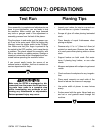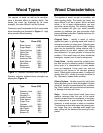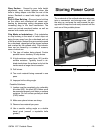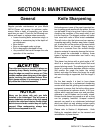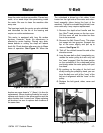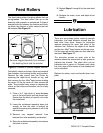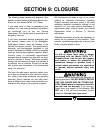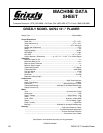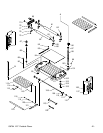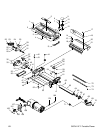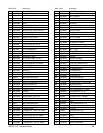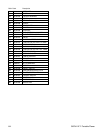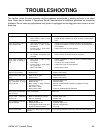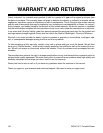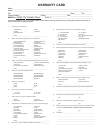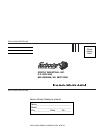
G8794 12
1
⁄2" Portable Planer
-25-
This section covers the most common machine problems encountered in planing and what to do about
them. Refer also to Section 7: Operations, Wood Characteristics for additional guidelines on processing
problems. Do not make any adjustments until planer is unplugged and moving parts have come to a com-
plete stop.
TROUBLESHOOTING
SYMPTOM
Motor will not start.
Motor will not start; fuses or
circuit breakers blow.
Motor overheats.
Motor stalls (resulting in
blown fuses or tripped cir-
cuit).
Motor arcing visibly through
vents or runs erratically.
Machine slows when oper-
ating.
Machine is loud when cut-
ting. Overheats or bogs
down in the cut.
Planer starts, but cutterhead
does not move.
Planer starts, cutterhead
turns, no cut.
Loud, repetitious noise com-
ing from machine
Cannot control snipe.
POSSIBLE CAUSE
1. Low voltage.
2. Open circuit in motor or loose
connections.
1. Short circuit in line cord or plug.
2. Short circuit in motor or loose
connections.
3. Incorrect fuses or circuit break-
ers in power line.
1. Motor overloaded.
2. Air circulation through the motor
restricted.
1. Short circuit in motor or loose
connections.
2. Low voltage.
3. Incorrect fuses or circuit break-
ers in power line.
4. Motor overloaded.
1. Brushes sticking.
2. Brushes worn.
1. Depth of cut too great.
2. Brushes worn.
1. Excessive depth of cut.
2. Blades are dull.
3. Blade holder or blade assembly
mounting is loose.
4. Belt is worn or loose.
5. Short circuit in motor.
Worn or broken belt.
1. Blade not extending far enough.
2. Belt worn or slipping.
1. Blades are dull.
2. Excessive depth of cut.
3. Cutting against natural wood grain.
4. High wood moisture content.
Long or heavy board sags as it enters
and exits.
CORRECTIVE ACTION
1. Check power line for proper voltage.
2. Inspect all lead connections on motor for loose or open connec-
tions.
1. Inspect cord or plug for damaged insulation and shorted wires.
2. Inspect all connections on motor for loose or shorted terminals or
worn insulation.
3. Install correct fuses or circuit breakers.
1. Reduce depth of cut.
2. Clean out motor to provide normal air circulation.
1. Inspect connections on motor for loose or shorted terminals or
worn insulation.
2 Correct the low voltage conditions.
3. Install correct fuses or circuit breakers.
4. Reduce load on motor.
1. Check that brush holder is free of dirt and that brush moves freely.
2. Replace both brushes.
1. Reduce depth of cut.
2. Replace both brushes.
1. Decrease depth of cut.
2. Sharpen blades.
3. Recheck complete blade installation and tighten all screws.
4. Replace belt.
5. Inspect by qualified electrical technician.
Replace belt.
1. Increase depth of cut.
2. Replace belt.
1. Sharpen blades.
2. Decrease depth of cut.
3. Reverse cutting direction.
4. Dry wood.
Lift up on unsupported end of board as it enters and exits cutterhead.



